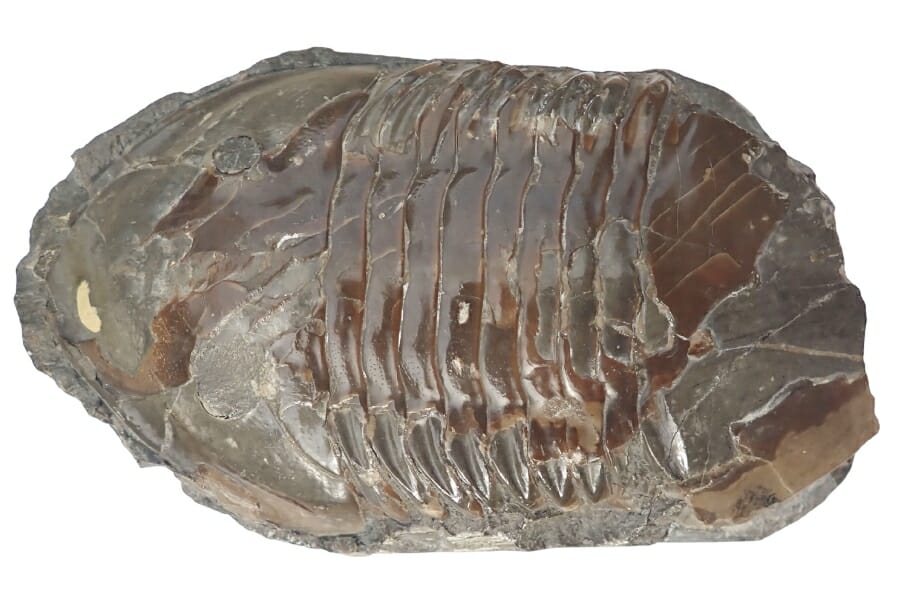Finding fossils in Ohio can be tricky if you’re not looking in the right places. Every time you take a step you’re stepping on ancient history but finding the more interesting fossils doesn’t happen just anywhere! We’ll show you where and how to find Ohio fossils in several different parts of the state.
Warm, shallow seas once covered this state; you can still find clues to its watery past. Scientists can get a clearer picture of Earth’s history with the help of these fossils, which show us what kinds of animals used to live in Ohio.
Plus, there’s something magical about holding a brachiopod or trilobite that is 450 million years old in your hand.
If you want to look for fossils in Ohio, you should ask for help so you know where to look. You might find a fossil by accident while hiking, but you’ll have a better chance if you know where to look.
It’s the same as going back in time without a DeLorean! So why not spend a day exploring Ohio’s ancient seas? You never know what treasures you might find.
The Fossils Of Ohio You Can Find
From the fossils of considerable dinosaurs to the fossils of small sea creatures, the state is a window into the past. During your explorations, you can find a wide range of these fossils. It is more than just a hobby; it’s a trip through time!
Every time you walk on the different types of land in Ohio, you might find signs of life from millions of years ago. Everyone should have the chance to dig up a fossil, feel its texture, and think about how it got there.
To find even more fascinating rocks and minerals in the state, you can also look at our guide to rockhounding in Ohio.
- The extensive local experience and understanding of our team
- Input from multiple local fossil hunters and fossil groups
- The accessibility of the various locations
- Safety and potential hazards when collecting
- Private and public locations
- A desire to include locations for both experienced fossil lovers and those who are just starting out
Using these weights we think we’ve put together the best list out there for those who love finding great new fossils for our collections!
Common Ohio Fossils
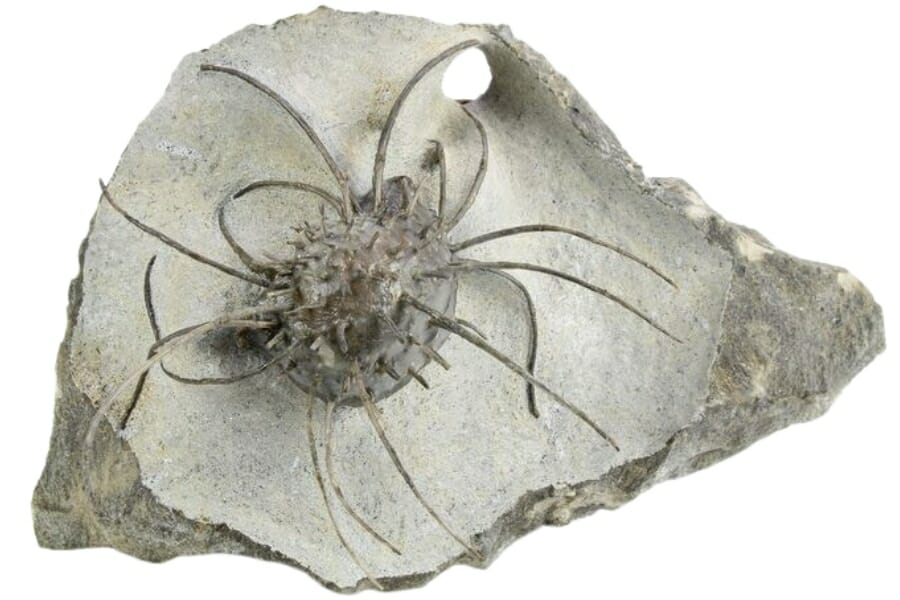
Ohio has many different kinds of fossils. Here are a few common examples of fossils that can be found in the state:
- Brachiopods
- Bryozoans
- Cephalopods
- Conodonts
- Corals
- Crinoids
- Gastropods
- Pelecypods
- Shark Teeth
- Trilobites
Ohio State Fossil – Isotelus Trilobite
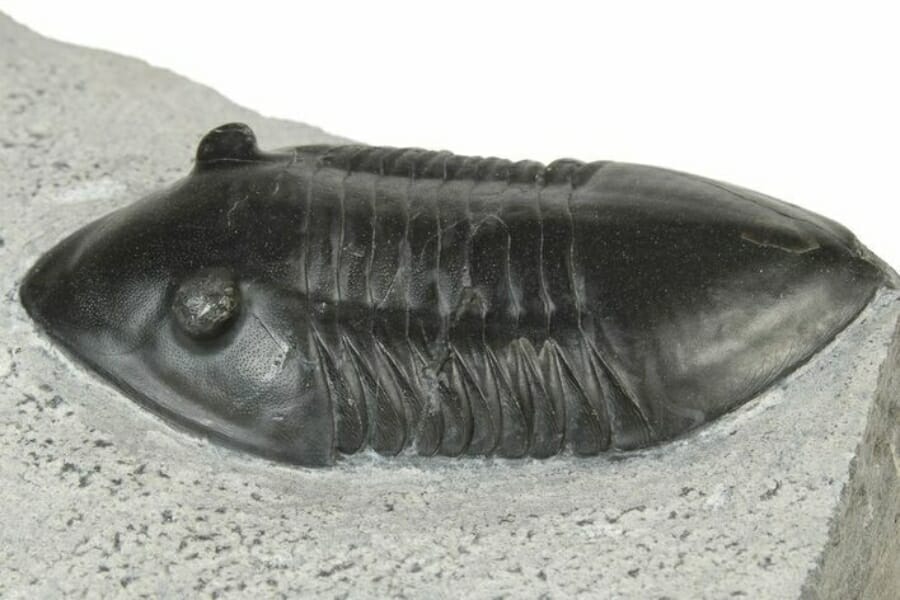
Isotelus trilobites are the state fossil of Ohio, and they show us a lot about how the world used to be. About 450 million years ago, Ohio was covered by a shallow sea during the Ordovician Period.
At that time, these marine arthropods lived there. Isotelus are some of the biggest trilobites ever found. They are usually between 3 and 4 inches long, but can sometimes grow over a foot long. Their well-preserved fossils tell us a lot about marine life in the past, so fossil hunters in Ohio love to find them.
Rare State Fossils
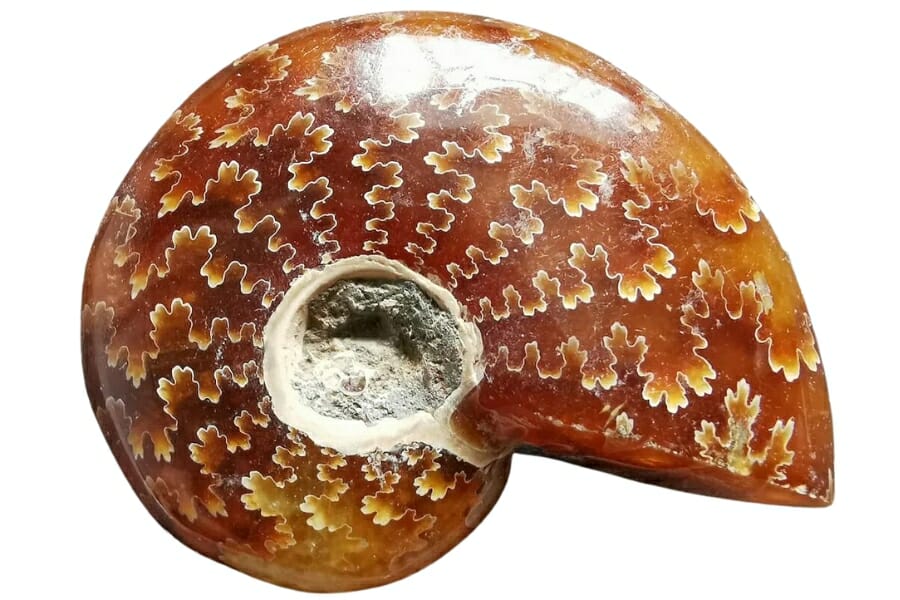
Below, we also have a list of some rare and valuable fossils that were found in Ohio. As you explore, keep an eye out for these fossils:
- Ammonites
- Eurypterids
- Fish Fossils
- Large Cephalopods
- Plant Fossils
- Tentaculites
- Well-preserved Corals
The Best Places To Find Fossils In Ohio
We will discuss the excellent locations in Ohio to look for fossils. Even though there are many choices, we’ll focus on what we think are the best ones. You’ll have fun visiting these places and finding interesting rocks and minerals.
Always Confirm Access and Collection Rules!
Before heading out to any of the locations on our list you need to confirm access requirements and collection rules for both public and private locations directly with the location. We haven’t personally verified every location and the access requirements and collection rules often change without notice.
Many of the locations we mention will not allow collecting but are still great places for those who love to find beautiful rocks and minerals in the wild without keeping them. We also can’t guarantee you will find anything in these locations since they are constantly changing.
Always get updated information directly from the source ahead of time to ensure responsible rockhounding. If you want even more current options it’s always a good idea to contact local rock and mineral clubs and groups
Brush Creek
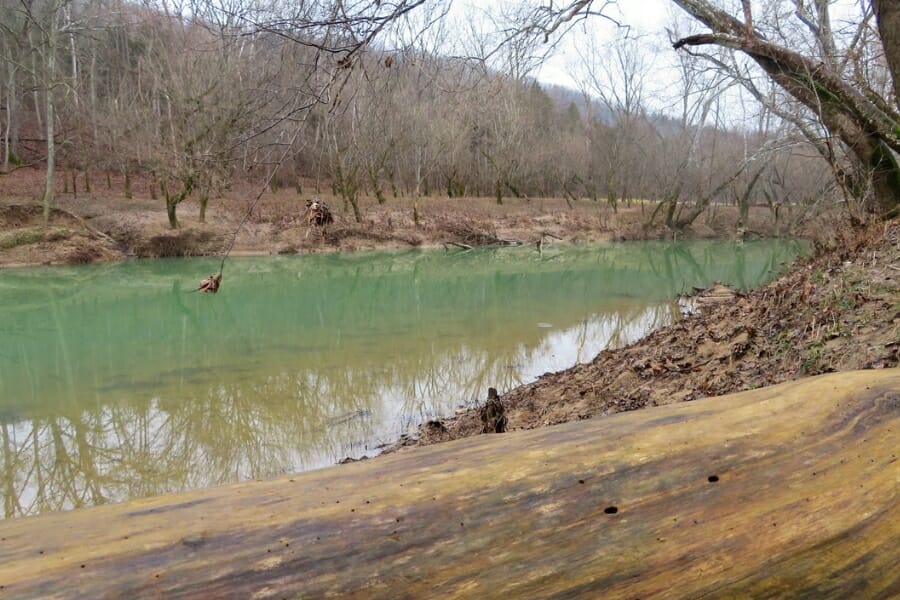
Brush Creek is an excellent place for people who like fossils. Flowing through layers of sediment from the Pennsylvanian period of the Carboniferous era, this creek has been eroding and revealing evidence of when Ohio was near the equator and covered in vast tropical swamps and forests.
It’s a great place to look for fossils because it is easy to get to. New fossils are constantly being found because of the creek’s natural erosion. Brush Creek becomes an excellent place for paleontologists of all levels when you add this natural process to the area’s long geological history.
But ensure you always follow local rules and get the permissions you need before collecting fossils.
Where and what to find fossils in Brush Creek
Most rocks near Brush Creek are sandstone, limestone, and shale. These sedimentary layers have kept a lot of fossils, like brachiopods, bryozoans, ferns, horsetails, and different kinds of marine invertebrates, which give us a look at ecosystems from long ago.
DON'T MISS OUT ON ANY GREAT FINDS!
While you're out searching for Fossils you're going to find A LOT of other interesting rocks and minerals along the way. The last thing you want to do is toss out something really interesting or valuable. It can be easy to misidentify things without a little guidance.
We've put together a fantastic field guide that makes identifying 140 of the most interesting and valuable rocks and minerals you will find REALLY EASY. It's simple to use, really durable, and will allow you to identify just about any rock and mineral you come across. Make sure you bring it along on your hunt!
Caesar Creek State Park
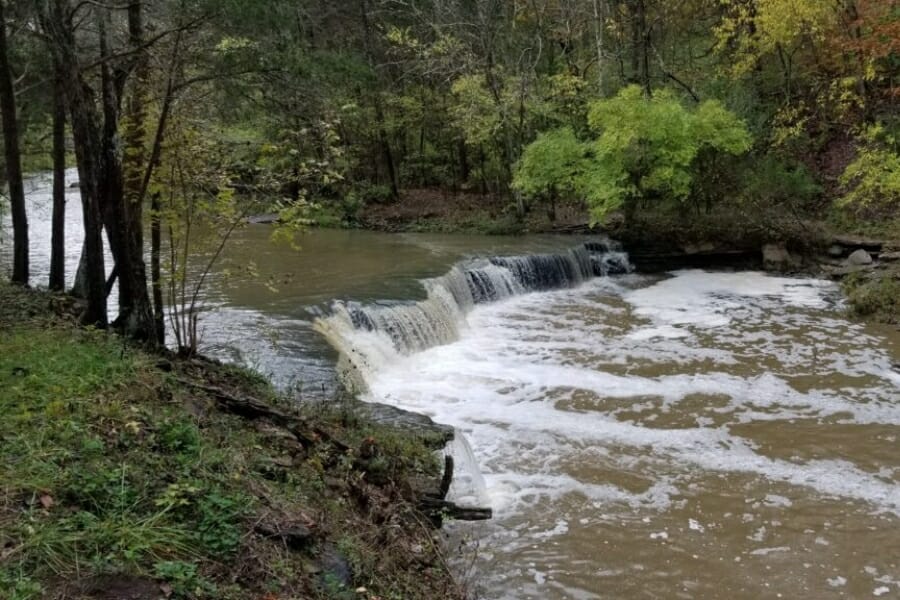
Caesar Creek State Park is in the southwestern part of Ohio. It’s a great place for outdoor lovers and fossil hunters. The park has a lot of natural beauty, such as hiking trails, a lake for boating and fishing, and campsites, but what really makes it stand out is that it has a lot of fossils.
During the Ordovician period, about 450 million years ago, the land that is now Caesar Creek State Park was covered by a warm, shallow sea. Because of this, the sedimentary rock layers here are full of fossils that are still in good shape.
The spillway area near the Caesar Creek Dam, where collecting fossils is allowed, makes Caesar Creek a great place to look for fossils. Because of ongoing erosion and regular earth-moving for dam maintenance, new layers of rock are always being exposed.
Where and what to find fossils in Caesar Creek State Park
The fossils of brachiopods, trilobites, cephalopods, corals, and crinoids from the Ordovician period are what the park is best known for. These fossils are a real-life history lesson for visitors because they show how an ancient marine ecosystem worked.
Clifton Gorge
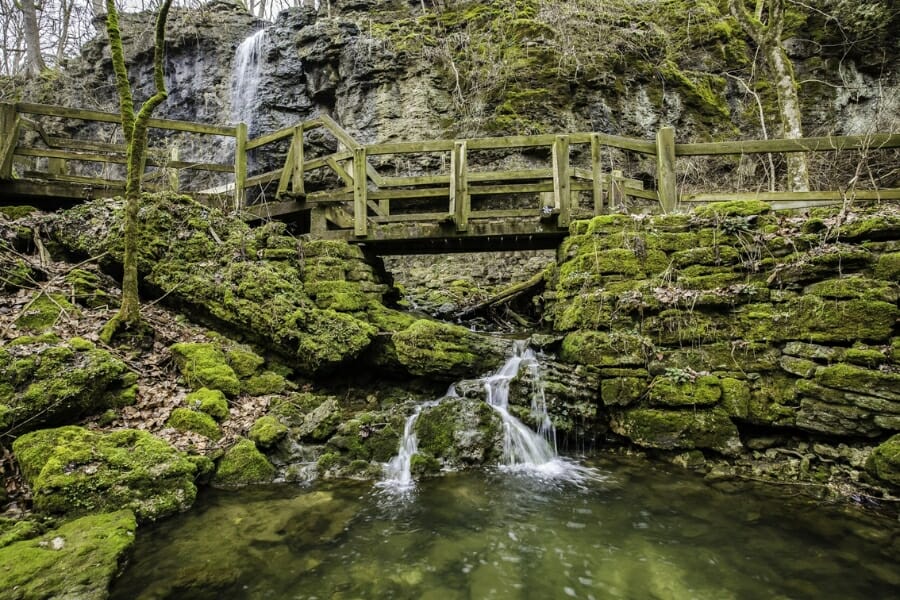
Clifton Gorge is a beautiful place near Yellow Springs in southwestern Ohio. The Little Miami River carved deep gorges in the limestone rock there. These rock formations tell a story about geology that goes back hundreds of millions of years.
They are a great place to look for fossils because the gorge shows off bedrock layers, mainly limestone and dolomite. These layers were made long ago when warm, shallow seas covered Ohio.
The Little Miami River’s power to erode keeps revealing new layers of these sedimentary rocks. This means that there is always a chance of finding something new.
Where and what to find fossils in Clifton Gorge
You can find fossils of crinoids, brachiopods, and even trilobites occasionally. These fossils look at marine ecosystems that were thriving before dinosaurs.
Hueston Woods State Park
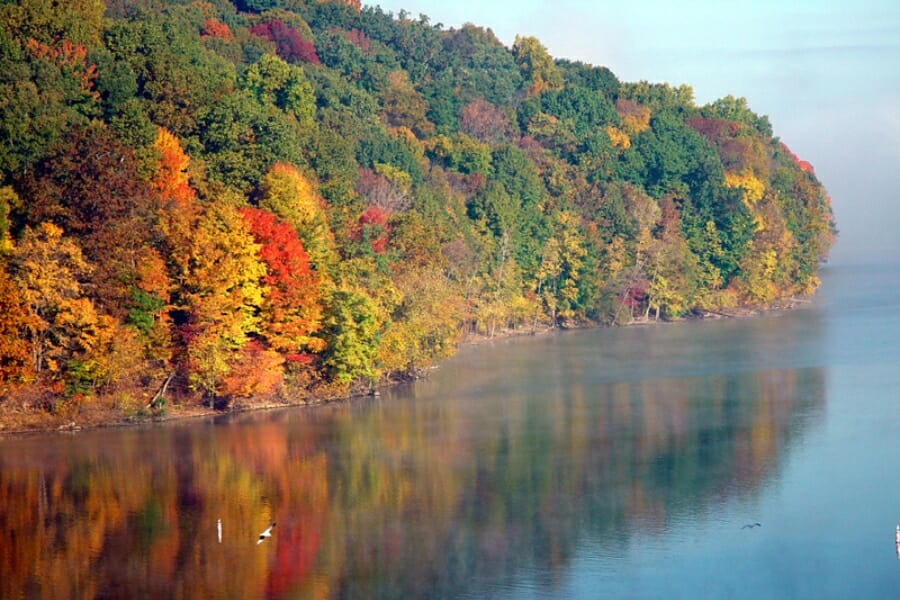
Hueston Woods State Park is in southwestern Ohio, close to Oxford. It is a nature lover’s dream, with hiking, camping, boating, and fishing, among other things. But this park stands out for many visitors because the land is full of fossils.
With rock formations from about 450 million years ago in the Ordovician period, this area is a link to a time when most of Ohio was underwater in a tropical sea.
The natural erosion in Hueston Woods keeps revealing new fossils, and the park’s focus on education makes it a great place to look for fossils. Fossil hunting is not only allowed but also encouraged in certain areas. This makes it an excellent place for families and school groups to learn about paleontology firsthand.
Where and what to find fossils at Hueston Woods State Park
Brachiopods, trilobites, and even cephalopods are often found by fossil hunters in Hueston Woods. These fossils, which are found in the shale and limestone formations of the park, tell us a lot about the marine life and ecosystems of the past.
Sylvania Fossil Park
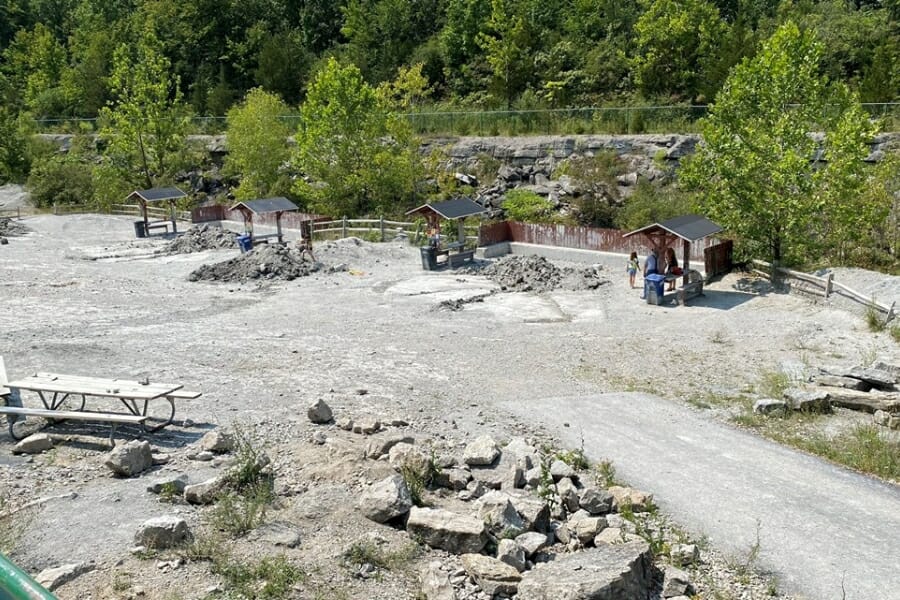
In Sylvania, Ohio, there is a park called Sylvania Fossil Park where you can look for fossils differently from other places. In many parks, looking for fossils means walking through the woods or wading in creeks.
However, Sylvania Fossil Park has piles of shale from nearby quarries, making it easy and productive for visitors to dig for fossils. This setup is great for families with young children or people just starting in the hobby because it makes fossil hunting easier and less dangerous.
Where and what to find fossils in Sylvania Fossil Park
The park’s shale deposits are rich in Devonian-period fossils, roughly 375 to 385 million years old. You can commonly find brachiopods, crinoids, and corals, among other marine invertebrates. You may even stumble upon the more elusive trilobites with a little patience and a keen eye.
Other Top Places To Find Ohio Fossils By Region
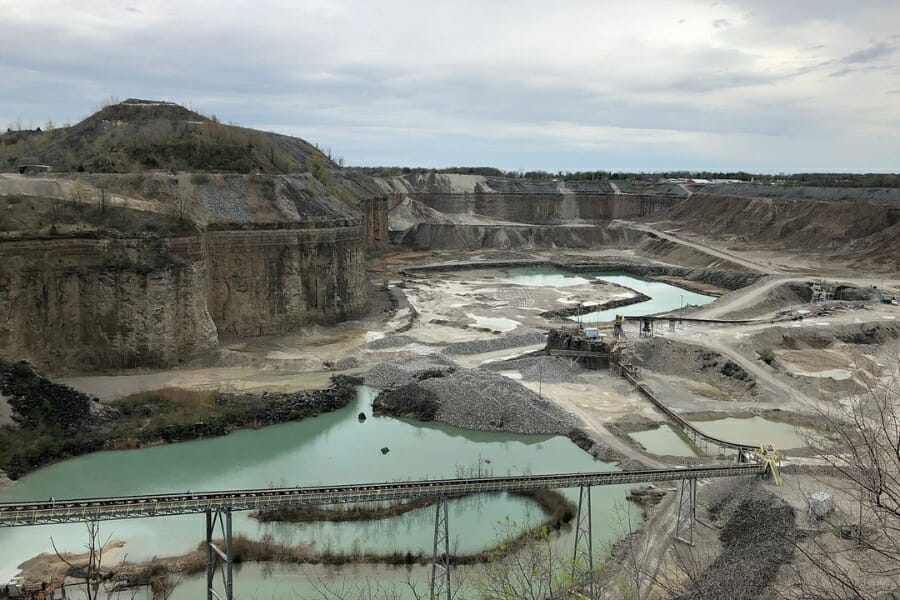
After discussing the best places in Ohio to find fossils, we’ll talk about other great places to look for fossils. To help you further, we’ve made a list of them below.
| Location | Fossils |
| Roadcuts on sides of Little Fork Church in West Union, Adam County | Conodonts, diverse fauna |
| Bellaire area, Belmont County | Flora Fossils |
| Crabapple area, Belmont County | Flora fossils |
| St. Clairsville area, Belmont County | Flora fossils |
| Quarry adjacent to Miami University, Butler County | Marine fossils |
| County wide, Carroll County | Flora and fauna fossils |
| County wide, Clermont County | Marine fossils |
| Intersection of Bear Creek road in Neville, Clermont County | Edrioasteroids-Carnyella |
| Blanchester area, Clinton County | Marine fossils |
| County wide, Columbiana County | Flora and fauna fossils |
| County wide, Coshocton County | Flora and fauna fossils |
| Cleveland area quarries, Cuyahoga County | Superb carbonized fish |
| Rocky River at Berea, Cuyahoga County | Vertebrates-Dinichthys |
| In banks of creek tributary to Pipe Creek at Bloomingville, Erie County | Devonian fossils |
| Yellow Springs area quarry adjacent to Antioch University, Greene County | Marine fossils |
| Hanson Quarry, Lucas County | Trilobites |
| Pique area streambeds and quarries, Miami County | Marine fossils |
| Dayton area gravel pits, quarries, and streambeds, Montgomery County | Marine fossils |
| Area quarries of Genoa, Ottawa County | Fossils |
| Williamsport area, along both sides of Deer Creek in Limestones, Pickaway County | Favosites, Meristella, Stropheodonta, Conocardium |
| Area quarries of Woodville, Sandusky County | Fossils |
Common Questions About Fossil Hunting In Ohio
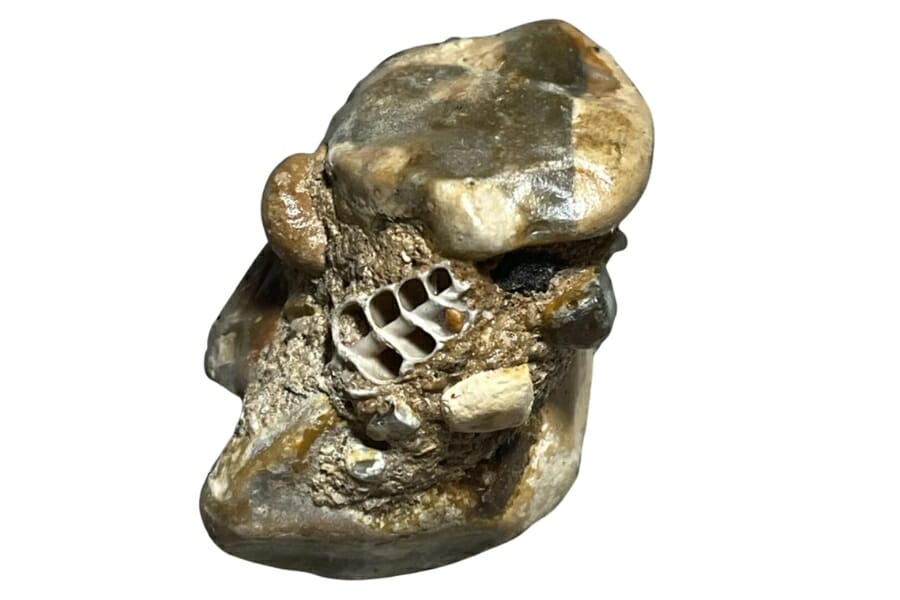
People who visit Ohio to hunt for fossils often ask questions like these about fossils, and it’s important to answer them.
Can you find megalodon teeth or shark teeth in Ohio?
Megalodon teeth and shark teeth are generally not found in Ohio. The reason is geological: the rock layers exposed in Ohio are primarily from the Ordovician, Silurian, Devonian, and Carboniferous periods, ranging from about 450 to 300 million years ago.
During these periods, Ohio was covered by shallow tropical seas and later by swamps and forests. However, the types of sharks that would leave teeth behind, including the gigantic megalodon, had not yet evolved or were not present in the area.
Is it illegal to collect fossils in Ohio?
Collecting fossils on state or federally-owned lands like national parks, national forests, or state parks often requires a permit, and there may be restrictions on what you can collect.
For example, some state parks like Caesar Creek State Park allow fossil collecting in designated areas but require a permit that can be obtained from the visitor’s center.
To collect fossils, consult Ohio’s proper state, local, or federal agencies to determine what you can and can’t do. If you don’t follow these rules, you could be fined, have your fossils taken away, or face other legal consequences.
Always responsibly collect fossils to keep the environment and fossil record safe for future generations.
Can you find dinosaur bones in Ohio?
Dinosaur bones are extremely unlikely to be found in Ohio. Ohio’s geological history and rock formations do not align with the time periods when dinosaurs roamed the Earth.
Ohio’s exposed rock layers primarily date from the Paleozoic Era, specifically from the Ordovician to the Carboniferous periods, which range from about 450 to 300 million years ago.
Our Favorite Places To Buy Fossils In Ohio

Some people don’t like digging in the dirt to find fossils. If you don’t want to work too hard to get these old treasures, go to one of our local rock shops. Here are some of them:
- Accent on Nature – 1435 Grandview Ave, Columbus, OH 43212, United States
- House of Phacops Rock Shop – 29894 State Rte 41, Peebles, OH 45660, United States
- Momma’s Rocks – 1698 Merriman Rd, Akron, OH 44313, United States
- The Rock Shop – 1395 W 10th St, Cleveland, OH 44113, United States
- Rocks with Sass: Crystal Shop – 611 Park Meadow Rd J, Westerville, OH 43081, United States
- Something Special Shop – 185 Old County Line Rd, Westerville, OH 43081, United States
- V Rock Shop LLC – 7061 Sunset Strip Ave NW, North Canton, OH 44720, United States

